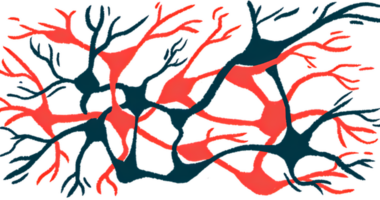Defects in Parkinson’s-linked VPS13C disrupt lysosome repair
Without the protein, a key part of the cells' response to damage is disrupted

Defects in VPS13C, a protein whose dysfunction has been linked to Parkinson’s disease, can prevent cells from repairing damage to their waste disposal systems, a study shows.
VPS13C and other proteins associated with genetic forms of Parkinson’s help repair damaged lysosomes, which are cell components that recycle waste. Without the protein, a key component of the cells’ early response to lysosome damage is compromised and lysosomes become more fragile, potentially contributing to cell damage in Parkinson’s.
“Imagine a fire truck rushing to the scene to minimize damage — this mechanism is part of an emergency system that prevents leakage from a damaged lysosome,” Pietro De Camilli, MD, a neuroscience and cell biology professor at Yale, said in a university press release. “A chronic loss of lysosomal integrity could lead to cell toxicity and ultimately neurodegeneration.”
The study, “The bridge-like lipid transport protein VPS13C/PARK23 mediates ER–lysosome contacts following lysosome damage,” was published in Nature Cell Biology.
Some cases of Parkinson’s are caused by genetic mutations, such as those where the VPS13C gene is affected, which result in defects to its corresponding protein. The link between VPS13C dysfunction and the progressive neurodegeneration that leads to Parkinson’s symptoms remains poorly understood, however.
De Camilli and his colleagues propose that this mechanism may involve lysosomes, cellular structures filled with enzymes that break down waste. The VPS13C protein appears to act as a molecular bridge, enabling fatty compounds produced elsewhere in the cell to reach and support lysosome formation.
Importance of VPS13C in lysosome repair
Here, researchers showed that VPS13C is also important for repairing lysosomes after damage. Impaired lysosomal function plays a role in the accumulation of toxic proteins and neuronal degeneration in Parkinson’s disease.
The scientists treated cells with a compound that disrupts lysosomal membranes and within minutes, VPS13C rushed to the damaged lysosomes, preceding other molecules that contribute to lysosome repair. They found a region of VPS13C that recognizes the damaged lysosomal membranes, allowing the protein to bind. A similar bridge-like mechanism as VPS13C uses to perform its lipid transport function may help prevent or repair this damage. Without this repair, damaged lysosomes can leak toxic materials into cells.
Also, when genetic editing was used to create cells without VPS13C, lysosomes were more fragile. This could help explain why mutations that stop VPS13C from working properly are linked to Parkinson’s.
While VPS13C rapidly responded to lysosome repair, LRRK2, another protein associated with genetic forms of Parkinson’s, reacted slower to lysosomal damage. Mutations in the LRRK2 gene are one of the most common genetic causes of Parkinson’s.
“We have two proteins implicated in Parkinson’s disease and both come in to help repair lysosomes, but with different kinetics,” De Camilli said. “One of our key goals in the future is to understand the relationship between these proteins.”
Knowing that both proteins are involved in lysosome repair suggests that new therapies could target the process. While some therapies for Parkinson’s are focused on one mutation, medications involving lysosome repair may be useful across multiple genetic forms of the disease, according to the researchers.







